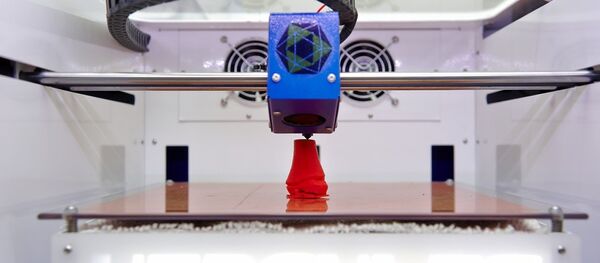The Northwestern University researchers primed a 3D printer with a nozzle capable of firing gelatin, derived from a collagen naturally found in mammalian ovaries. The ovaries were built by printing various patterns of overlapping gelatin filaments on glass slides — each "scaffold" measured a mere 15 by 15 millimeters. The team then carefully inserted mouse follicles (spherical structures containing a growing egg surrounded by hormone-producing cells) into these "scaffolds." The scaffolds that were more tightly woven hosted a higher fraction of surviving follicles after 8 days, an effect the team attributed to the follicles having better physical support.
A bioprosthetic ovary created using 3D printed microporous scaffolds restores ovarian function in sterilized mice https://t.co/ECPDoTCte2
— Monica M Laronda (@mmlaronda) May 16, 2017
The more tightly woven scaffolds were then tested in live mice. Researchers punched out 2-millimeter circles through the scaffolds, implanted 40-50 follicles into each one, and created a "bioprosthetic" ovary. The ovaries were then surgically removed from seven mice, and the prosthetic ovaries sutured in their place. Blood vessels from each mouse had infiltrated the scaffolds, a critical development as it provides oxygen and nutrients to the follicles, allowing hormones produced by the follicles to circulate in the blood stream.

What's more, some researchers believe 3D printing has the potential to generate customized replacement parts for the human body, or even create organs with capabilities beyond normal human biology.
3D-printed ovaries restore fertility in mice https://t.co/VEBEBeTUIZ @woodrufflab
— Monica M Laronda (@mmlaronda) May 16, 2017
However, while such prospects are mind-bending and exciting in the extreme, the burgeoning 3D printing revolution is not without risks. For one, 3D printers consume between 50 — 100 times more electrical energy than injection molding to make an item of the same weight, according to MIT research.
These printers may also pose a health risk, emitting particles that can settle in the lungs or the bloodstream, an Illinois Institute of Technology study has suggested. There are also significant intellectual property issues inherent in their usage — as they can print anything, unsuspecting users that attempt to make their own Lego or other popular toys may find themselves at risk of litigation. Criminals may also use them to maximize their forging activities in both existing and new areas.
3D printed guns shocked the world when the first was crafted in 2012, but beyond highlighting the capabilities of the technology, the innovation also by definition means anyone is capable of creating a gun in the comfort of their own home — once 3D-printers become a household staple. Such weapons created by plastics could defy metal detectors and X-ray scanners, and indeed their constituent parts could be surreptitiously ferried around without detection, for construction and use in sensitive situations and areas.
On the flipside, safety equipment can also be printed — but this in turn creates a number of ethical issues. If someone shoots and harms or kills another with a 3D-printed gun, who is responsible? If a bicycling child breaks their neck due to a faulty 3D-printed helmet, who's to blame? The owner of the printer, or the manufacturer of the printer?



